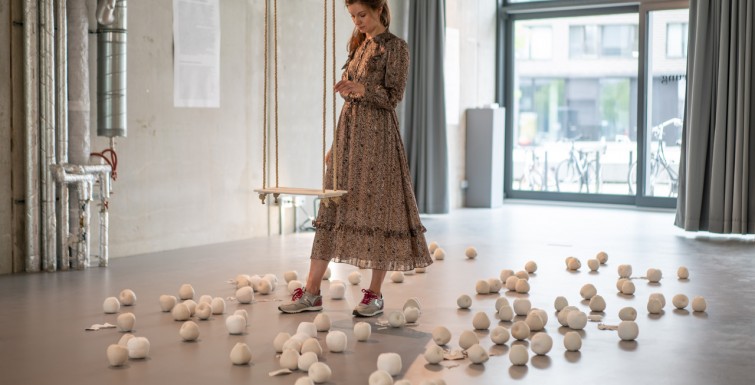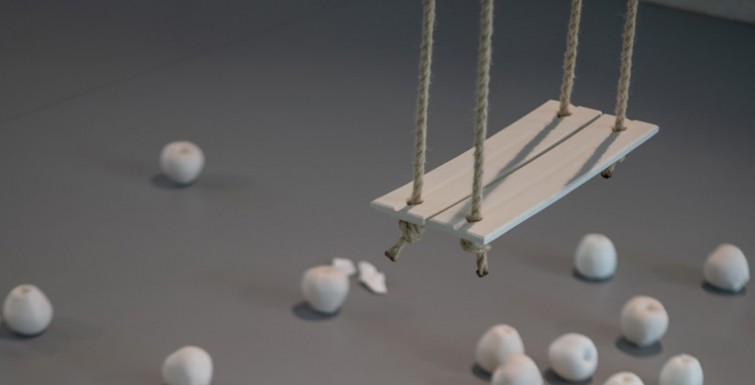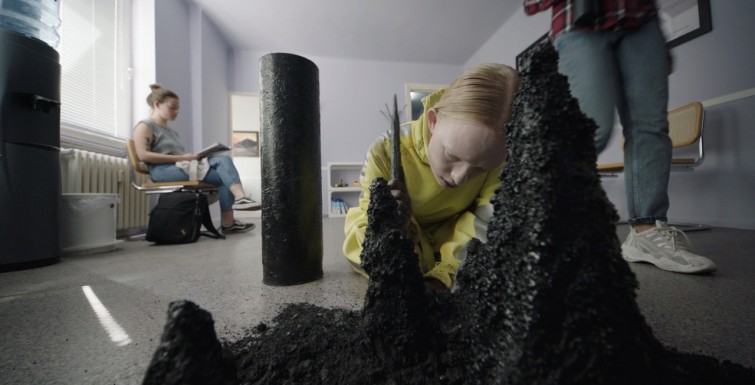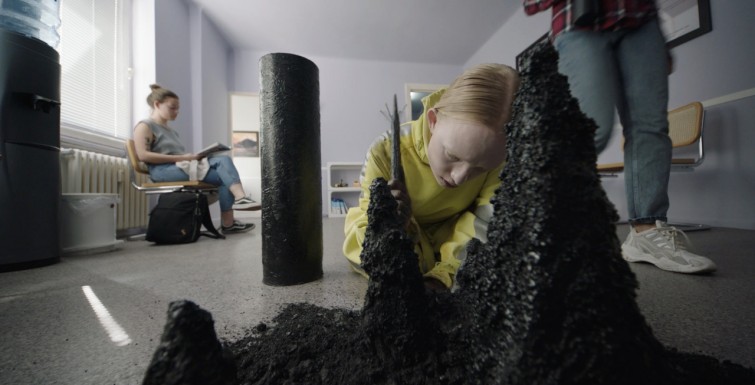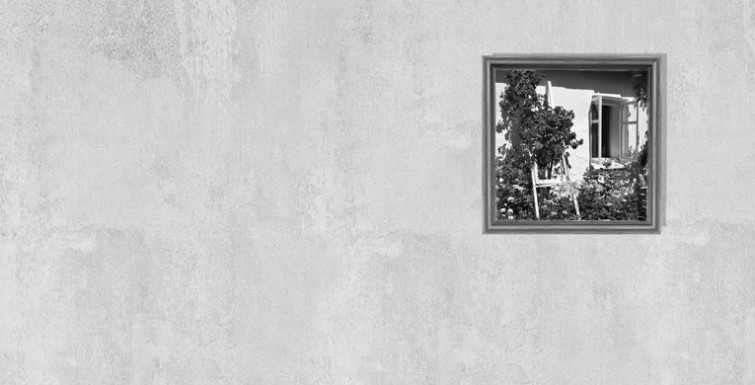Ekaterina Skladmann (born Filist) studied art in Minsk and textile and surface design in Berlin. Between 2017 and 2019 she was in the master program Bühnenbild_Szenischer Raum. She lives and works in Berlin with her husband and daughter.
You studied fine arts and textile design. How did it continue for you after the master’s program and what are you doing today?
Today I do various projects with a focus on scenography. In my textile and surface design studies at the Kunsthochschule Weissensee I had worked and experimented a lot with materials. For the short film “Jazzelle” for the rbb it was my task to develop a new material for their installation.
What did your entry into the field look like?
In my final thesis, I focused on the topic of the loss of a homeland. This resulted in many interesting and valuable contacts, which then, as fate would have it, helped me to get involved in numerous projects: For Monika Dobrowlanska’s play “Die Wiedergutmachung” I was able to develop the stage design. For the German-Polish association “My Life – Narrated Contemporary History” in Słubice/Poland, I designed a 35㎡ large paper installation. The book “Flucht-eine Menschheitsgeschichte” by Dr. Andreas Kossert was illustrated by me. Another part of my master thesis – the story of my grandmother – is described in this book. After that I organized the exhibition “Retina” with different artists on the topic of 50 years moon landing at the Zeiss-Großplanetarium Berlin. Currently I am working as an exhibition designer in “REWOMEN – Europeans Women’s Remembrance”, the project deals with the historical development of women’s rights in Europe, with European women’s peace movements – as well as with the experiences of women as victims of war. About 100 women from 10 partner countries will participate in the final exhibition in 2022-2023.
Your way of working is very versatile. How do you approach a design task?
Most of my projects have a documentary background, a historical story. And my task is to present these stories visually. I start my work by researching historical periods, eyewitness accounts, creating mood boards: a collection of emotional images, textures and materials. Several ideas for realization already emerge in the process.
What do you particularly like about your job?
Because of the wide range of topics that interest me, I appreciate the variety in the different projects and the opportunity to use different artistic techniques craft and digital.
What memories do you associate with the Bühnenbild_Szenischer Raum course?
It was a very intensive time for me. I was able to try out a lot during the two-year master’s program. Our group was very heterogeneous, each with their own professional experiences, artistic approaches and attitudes to life. These insights and learning from each other inspired me a lot.
What advice would you give to a first-year student of the Master’s program Stage Design/Scenic Space?
I would advise already during the studies:
Read a lot and watch a lot – plays, exhibitions, projects by designers and artists, sketch a lot, document and develop your own ideas, complete several internships to make new contacts and to explore your own strengths and focuses and always stay hungry for something new!

